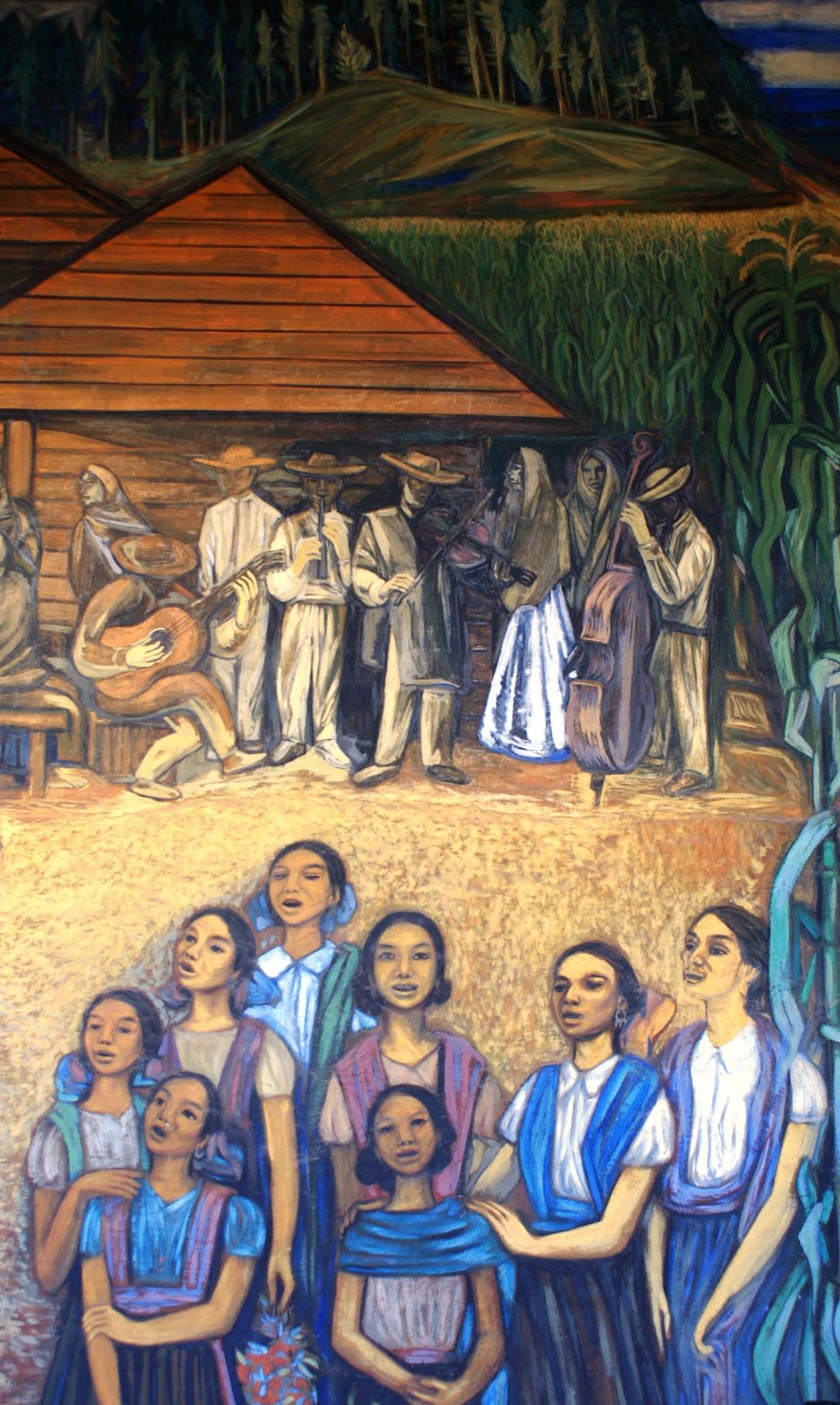13.5: Mexican Murals and Social Art
- Page ID
- 31990
|
Artist |
Native Country |
|
José Clemente Orozco |
Mexico |
|
David Siqueiros |
Mexico |
|
Diego Rivera |
Mexico |
|
Jorge González Camarena |
Mexico |
|
Alfredo Zalce |
Mexico |
Mural painting in Mexico started in the 1920s to promote the political and social messages about the government. Diego Rivera, José Clemente Orozco, and David Alfaro Siqueiros were the artists who lead the mural movement. From the 1920s through the 1970s, many murals were created, and their influence can still be seen today throughout the Americas. Beginning with the Olmec civilization, Mexico has a long tradition of mural paintings. The conquering Spanish destroyed Tenochtitlan and their art, bringing the Christian doctrine and building churches. Artist were commissioned to paint murals to reinforce that religion, similar to Italy during the Renaissance. In the 20th century, murals were used for social and political themes, educating the population, the murals displaying messages from the government, or demonstrating protesting concepts.
Los Tres Grandes
The three great mural artists were Rivera, Orozco, and Siqueiros and were considered “los tres grandes”. Although working on similar themes, each one had a different style of artistic expression. Siqueiros incorporated scientific concepts into his murals, Orozco was pessimistic in his approach with political paintings, while Rivera was idealistic and utopian, something the Mexican government favored.
José Clemente Orozco (1883-1949) was a product of the Mexican Revolution who overcame extreme poverty, fortunately discovering painting at an early age. He was influenced by Mexican cartoonist Jose Guadalupe Posada, who taught him art could become a powerful expression during a political revolution.
Orozco worked in somber colors and emphasized human suffering by distorting the human figure with slashing lines. Bringing his struggling social complexities, he did not glorify the war but focused his art on the horrors of war. The mural The People and Its Leaders (13.61) depicts Miguel Hidalgo Costilla, the leader of Mexican Independence, walking up the stairs in the government palace in Guadalajara, Mexico. In The Trench (13.62), the bodies of the fallen soldiers of the revolution form a cross. Orozco used red and sharp diagonal lines to demonstrate the brutality of war.

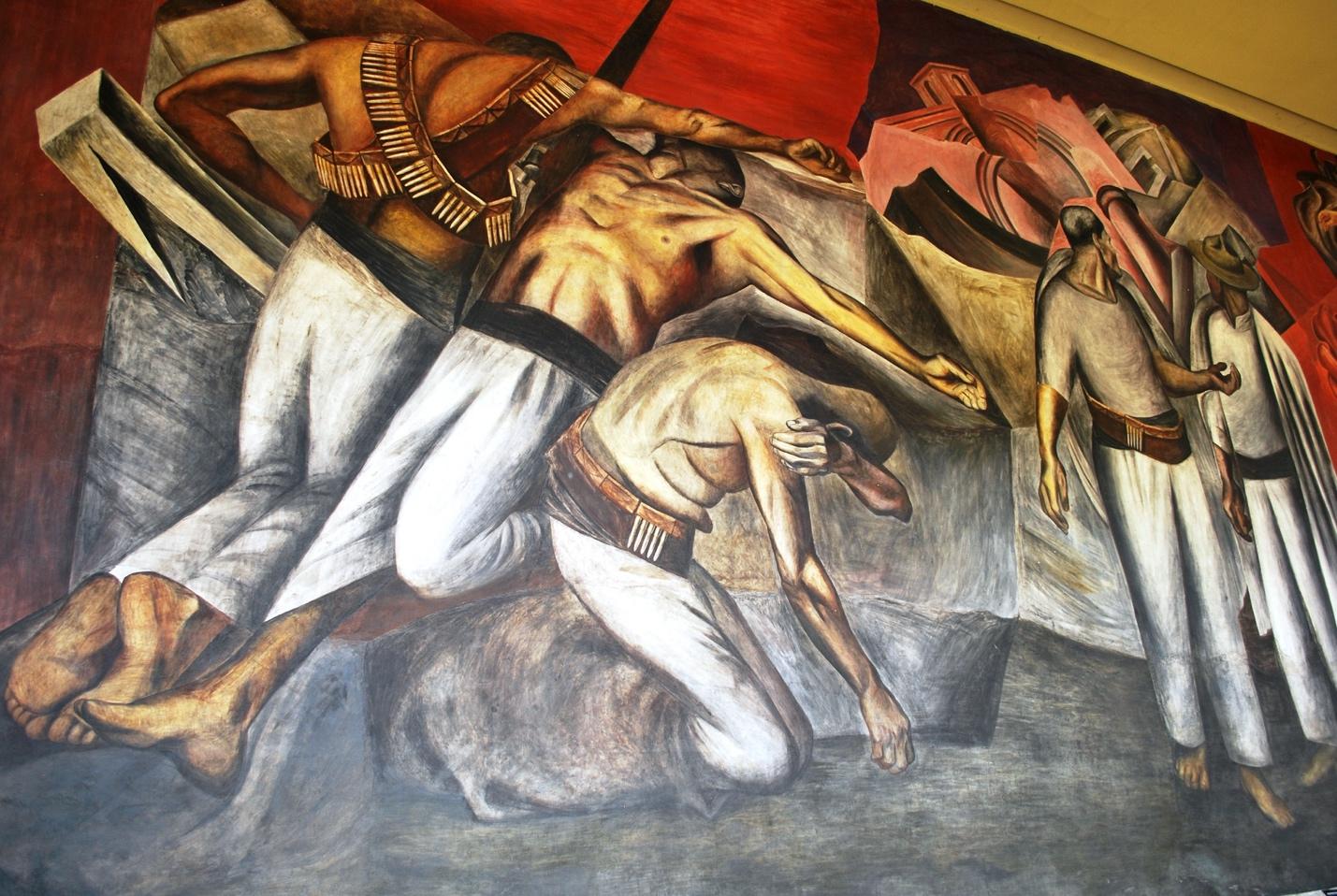
David Siqueiros (1886-1974) was a Mexican social realist painter who was known for his vast murals. The Polyforum Cultural (13.63) is part of the trade center in Mexico City built mid 20th century is covered with the most substantial mural work to date called La Marchade la Humanidad (March of Humanity) (13.64), measuring over 8,700 square meters. The overall arching theme revolves around humans’ endless struggles for a better society.
Siqueiros was the most radical, and he used bold, sweeping lines and blurred techniques form to paint the mural on the Polyforum, considered to be a Siqueiros masterpiece. There are three sections: March of Humanity Towards Bourgeois Democratic Revolution; The March of Humanity to the Revolution of the Future; Peace, Culture, and Harmony, all depicting scenes of suffering, yet optimism for the future.
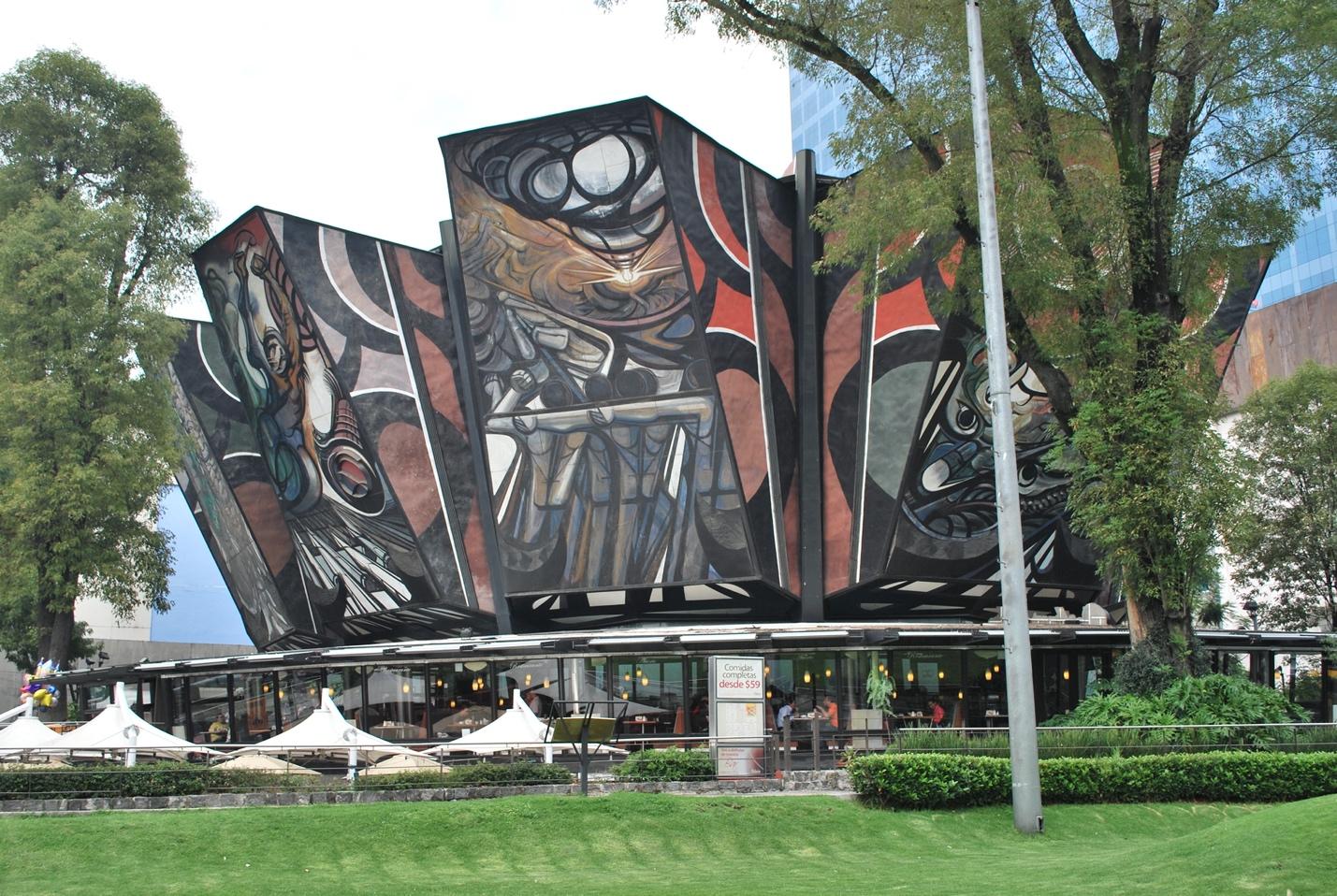
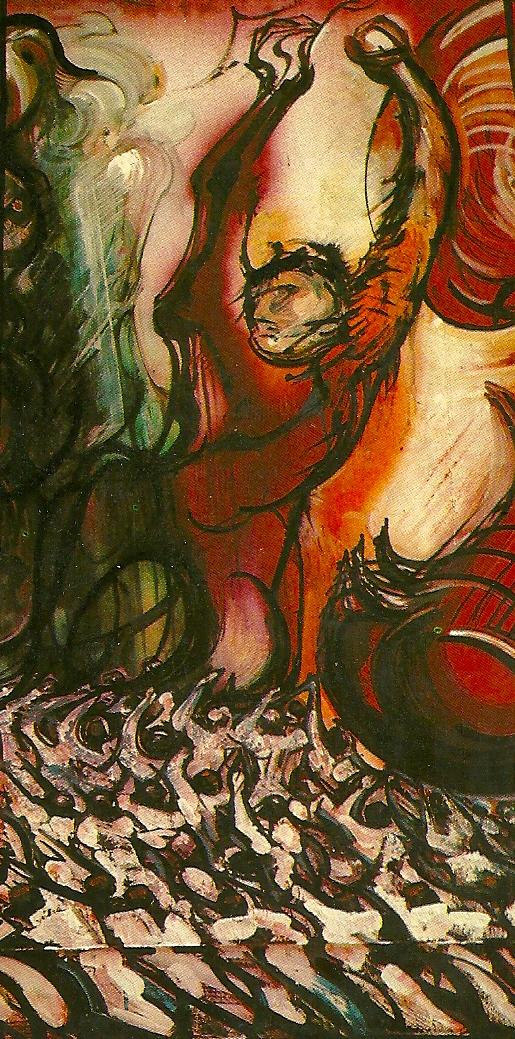
READING: The March of Humanity
Diego Rivera (1886-1957) was one of the most famous Mexican painters and was responsible for the Mexican Mural Movement in Mexico City. Rivera painted murals with the intent of providing a pictorial history of his country. A defender of collective justice and his work can be found around Mexico, depicting cultural advancements. Rivera was trained at the San Carlos Academy of Fine Art in Mexico City, and traveled throughout Europe, studying the styles of famous painters. Inspired by Cubism, Rivera combined his grand use of color with larger than life murals expressing his interest in Marxism and radical politics.
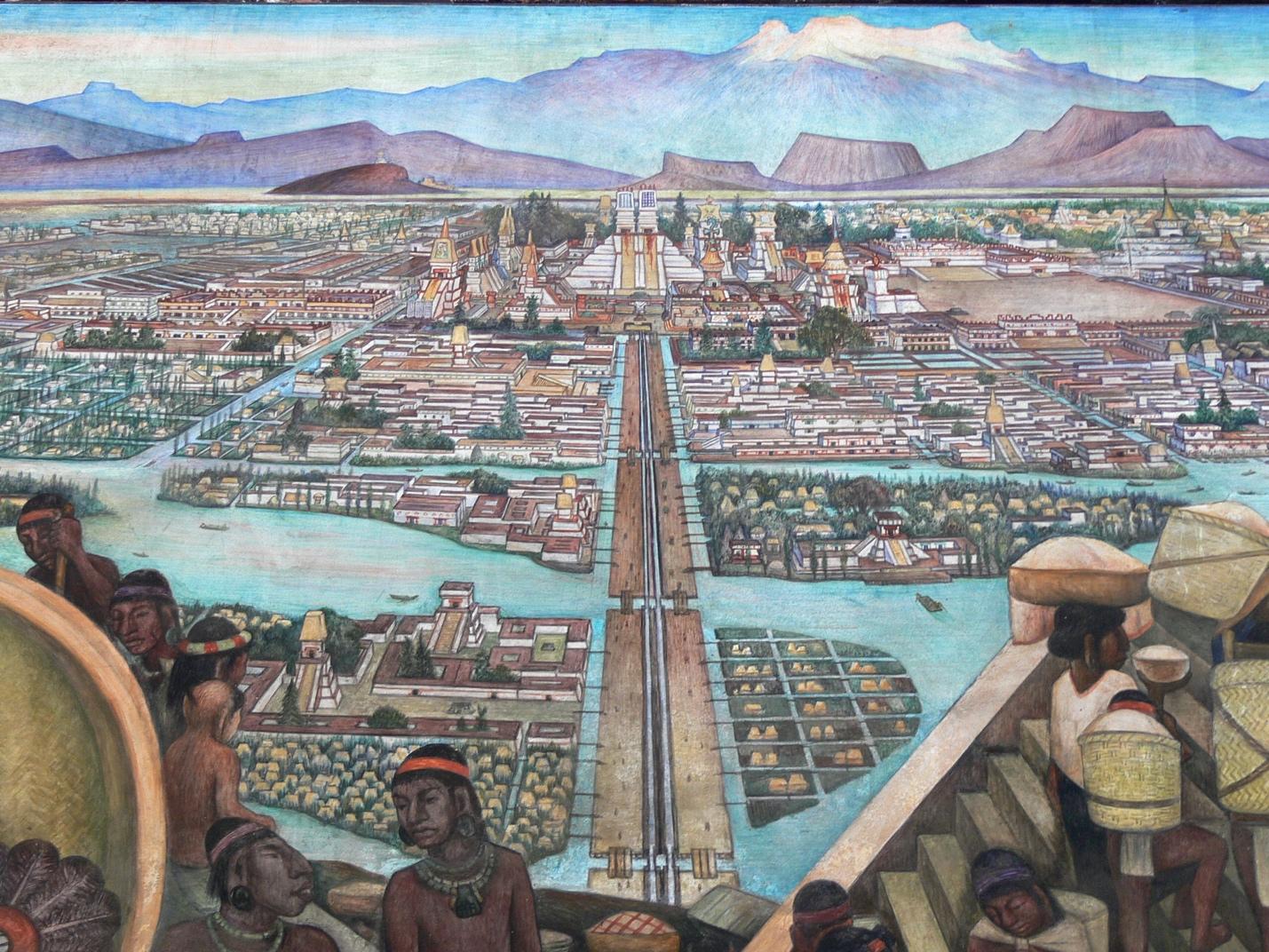
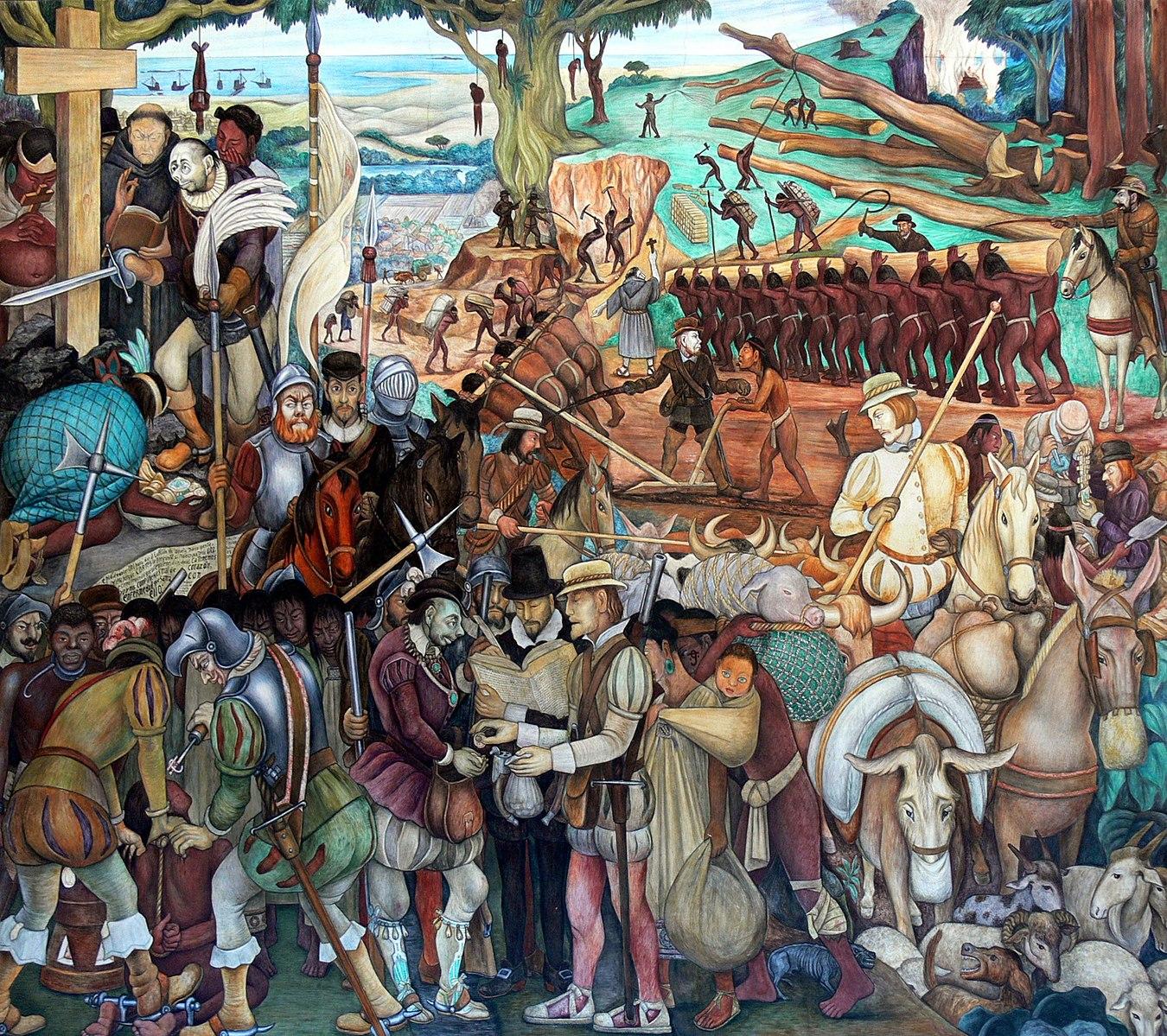
He followed the most traditional painting style from modernism and cubistic elements to paint his murals. Using bright colors with earthy tones to depict everyday life in ancient Mexico, he mainly promoted the indigenous people of Mexico. Diego Rivera’s mural in the Palacio Nacional, Mexico City, depicts life in Aztec times in the old city of Tenochtitlan. Mexico City was built on top of the conquered town of Tenochtitlan. In the mural Tenochtitlan (13.65), the snowcapped mountains in the distance display atmospheric perspective. The center of the city shows how massive it was with the pyramid, stone bridges, water canals, a vast marketplace, and streets lined with flowers. It was a time when Moctezuma II came to power, the height of the great Tenochtitlan. The Aztecs influenced the flat perspective, colorful paintings, and simplified figures. Another Rivera's mural (13.66) at the Palacio Nacional depicts the exploitation and cruelty of the Spanish conquest, native hanging, forced slavery, and forced religion.
Man, Controller of the Universe (13.67) was first a fresco in Rockefeller Center, New York. The mural focused on new social and scientific changes and modern social life, including some of the images depicting Russian soldiers and Lenin (13.68). The mural was considered too controversial and destroyed before it was completed. Because of the ongoing controversy, Rivera had photographs taken of the unfinished mural and recreated the painting at the Palacio de Bellas Artes in Mexico City.
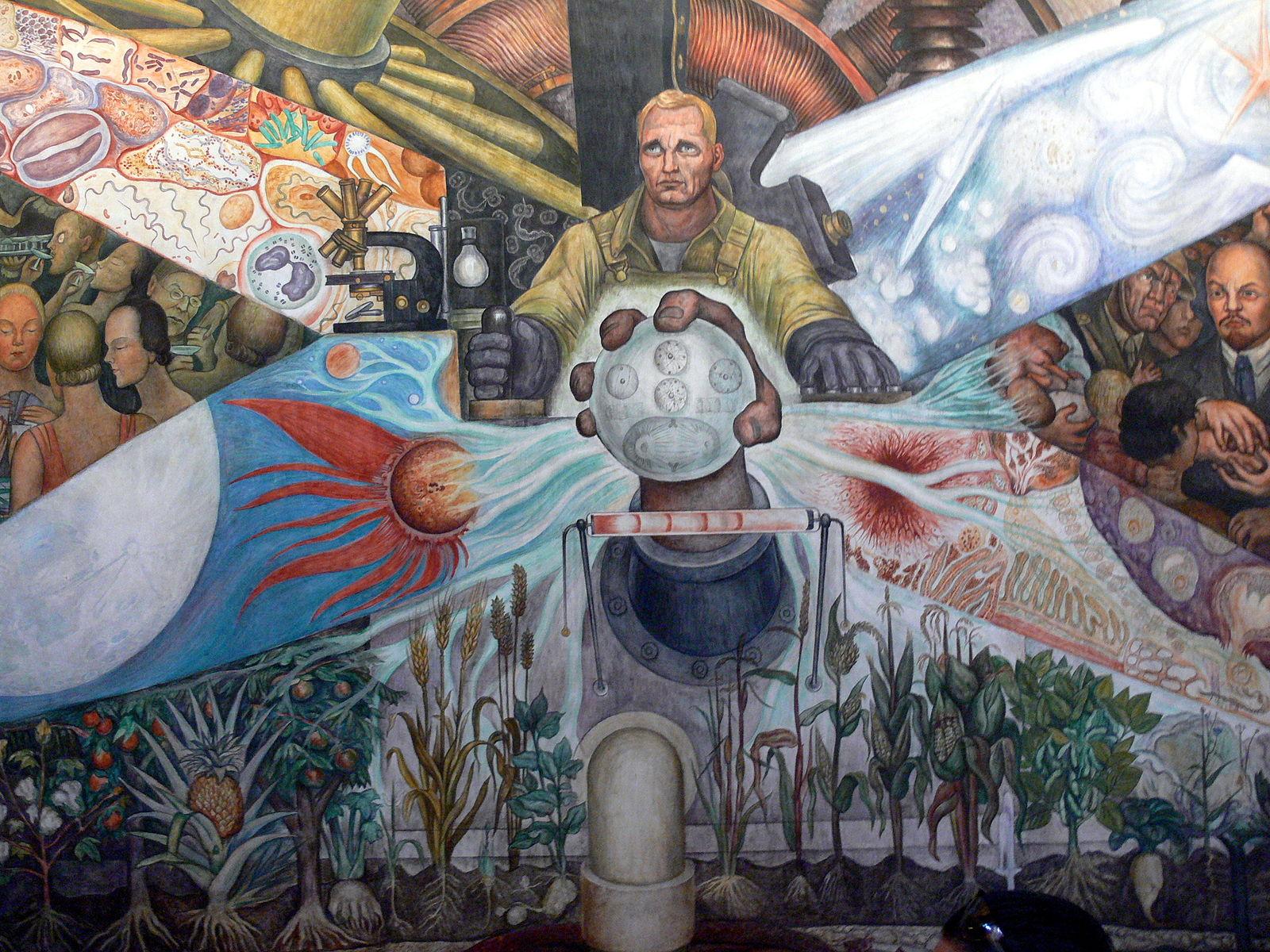
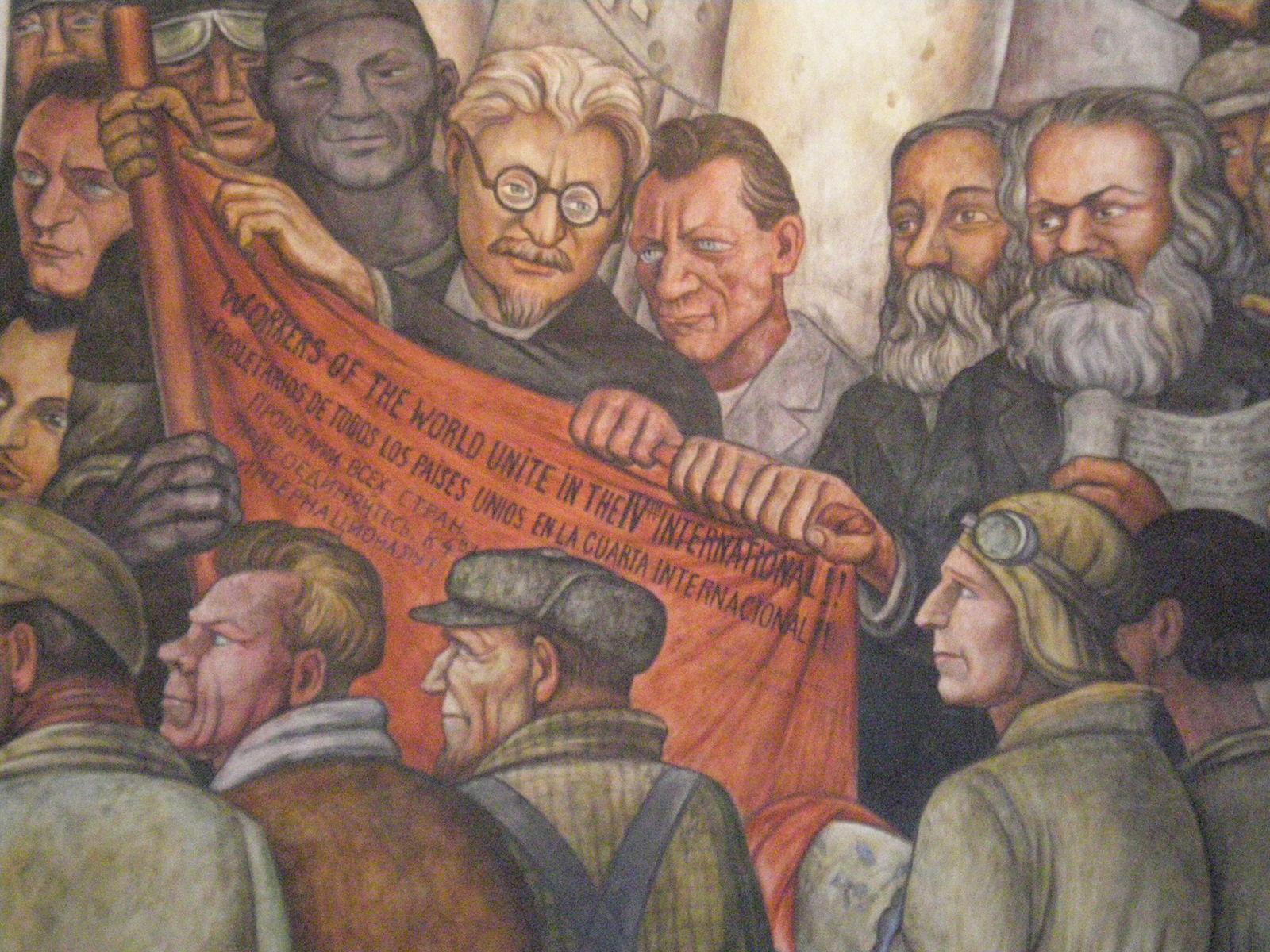
Jorge González Camarena (1908 – 1980) was a prominent Mexican painter and is best known as a muralist in Mexico City and referred to as the builder of mass, shape, and plane. His work was classified as Surrealism and Cubism using harmonic geometric shapes. Liberacion or La Humanidad se Libera de la Miseria (Man is released from misery) (13.69) is a mural is in the Palacio de Bellas Artes in Mexico City.
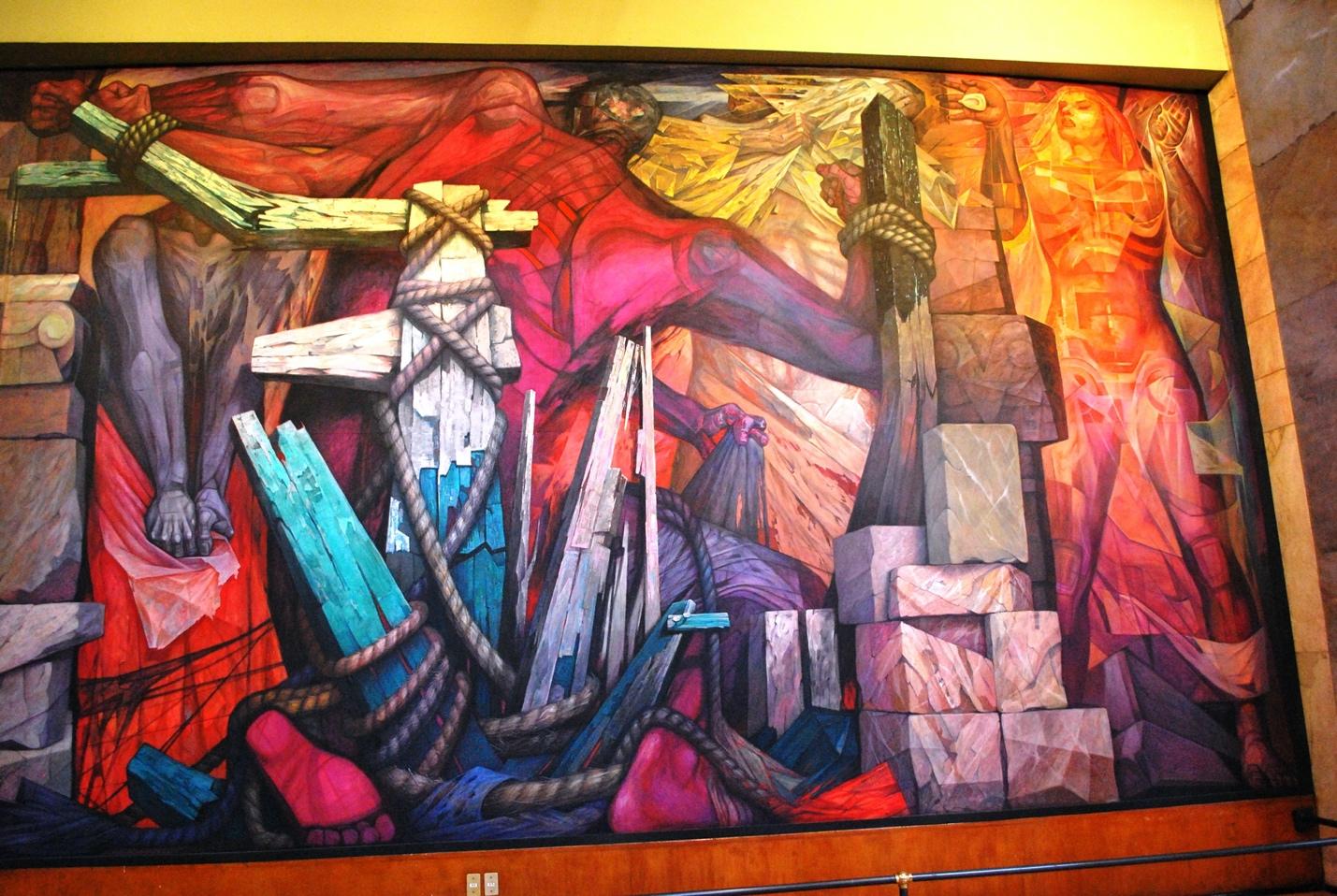
Alfredo Zalce (1908 – 2003) was a Mexican artist and is best known for his murals. His art career started young, around six years old, when he was drawing on the chalkboards at school, illustrating what the teacher was writing. His mural (13.70) is in the state government palace in Morelia, where he lived with his wife. Zalce helped influence modern art in Mexico as one of the great post-revolutionary muralists depicting the historical period of reform.
